One of the most publicized stories concerning the California Gold Rush was the fascinating story of the 49er’s and their flooding of northern California by land and by sea. Likewise, one of the not so publicized stories has to do with the very first Gold Rush prospectors, the 48er’s, the hordes who stampeded to the Sierra Nevada foothills before the legendary 49er’s ever arrived.
What occurred in late 1848 was in many respects the opening salvo of the great gold rush of California.
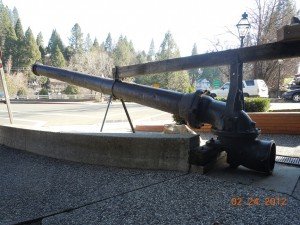
A Timely Speech and a Gold Rush
The exodus to the California gold fields began with a speech in San Francisco’s Plymouth Square.
The gold in California was discovered at a John Sutter’s sawmill in January of 1848 by James Marshall who was working for Sutter. Sutter wanted badly to keep the news secret and directed his employees to do so. Firstly, Sutter thought that this gold could help pay off his debts which were many. Secondly, a rush of prospectors to the area would jeopardize his land holdings and farming operations. Obviously something like this wouldn’t remain a secret for long. San Francisco newspapers reported on the finding in March but not much came of it. Finally it all came to a head in May of 1848 and with “proof” by way of a man named Sam Brannan, a storekeeper in Sutter’s Creek.
Sam Brannon became aware of the discovery at John Sutter’s sawmill from Mormans who lived in the area of the American River. Brannon obtained a bottle filled with gold dust and proceeded, when he felt the time was right and his stores along the American River fully stocked, to make a speech in Plymouth Square where he declared to the crowd…”Gold! Gold! Gold from American River!” While rumors about the gold discovery were known by many, albeit without seeing the gold itself, Brannon’s declaration and exciting exhibit offered proof to the rumors. This was enough to stir things up.
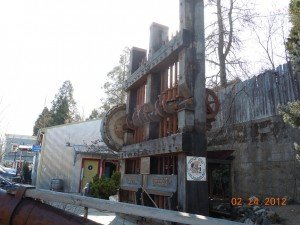
There wasn’t an instant stampede and the local papers at first treated this newest story mildly. That also didn’t last long. In a few days time there began a tremendous exodus out of San Francisco and other coastal settlements.
The newspapers actually closed down because the owners and employees felt more money could be made along the American River. Ships that arrived in San Francisco found crews deserting and heading east into the Sierra Nevada foothills. Stores closed when owners abandoned them. These were the 48er’s. These were the people residing in California at the time and they had the first pickings.
New York newspapers reported on the discovery in August 1848 but it would be months before the eastern population could make it all the way to northern California. Their choices included a journey overland, sailing around Cape Horn and up the coast or sailing to Panama and across a malarial jungle to a port on the Pacific coast. Any of these choices meant months of travel.
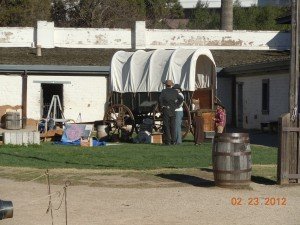
The Early Pickings for Gold
It is a fact that the earliest prospecting for California gold was by far the easiest. In some cases there was very little work involved finding the mineral. Some described it as being everywhere. It was said that out of the ten thousand prospectors in the gold fields during the fall of 1848 it was hard to find anyone who didn’t find $20 worth of gold each day. Five prospectors using picks and shovels uncovered $75,000 worth of gold in a three month period. Gold was found using only crow bars and a knives. Businessmen hired workers to hunt for gold thus increasing their profits. One person was known to promise local Indians relatively cheap gifts if they would bring him gold.
Selling to the Prospectors
Another way to make a fortune during the historic winter of 1848-1849 was to sell to the prospectors. It was said that $40 could be charged for a single meal. Horses could be sold for $300 that prior to the gold rush might have cost $6. Eggs could sell for $3 each and butter $6 per pound. If you were able to obtain the merchandise to sell, as Sam Brannon did, a fortune could be made without even leaving your store. Some smart prospectors invested their new found gold wealth into enterprises bringing goods via ship up from Mexico to sell to the miners. Shovels and picks would fetch $100 as did boots and a gallon of whiskey.
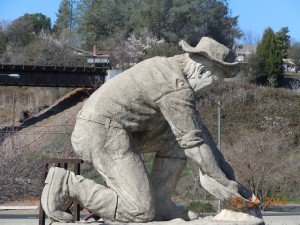
The First of the Forty-Niners
The first of the Forty-Niners were actually seen in southern California as early as August 1848. These were the people too anxious to get to California to wait for spring.
Knowing about the tragedy that the Donner Party met attempting to cross the Sierra Nevada range in the winter, these first arrivals to California took the southern Texas to San Diego route. This took them across the deserts of the southwest and over the Yuma Crossing to California. From San Diego it was north over the El Camino Real to northern California.
After the initial group of Forty-Niners reached the California gold fields thousands would follow and not only from the U.S. People from Europe, South America and Asia arrived in droves.
The Earliest Pickings Were the Best
By the third and fourth year of the Gold Rush the largest part of the precious metal was mined. Compared to the bonanza found by the first miners, especially those from 1848, there were people who arrived later and left disappointed. Nevertheless, fortunes were still made but the pickings were nothing like what was seen during that first winter of 1848-1849.
Below are links to two additional Trips Into History articles you may enjoy…
A Six Month Voyage Chasing For Gold
A Visit to the Gatekeeper’s Museum / Tahoe City CA
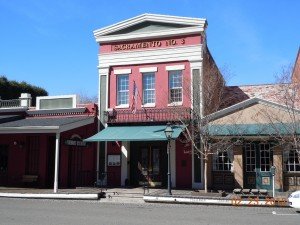
Visit California’s Gold Rush Museums and Parks
North Star Mining Museum– The museum located in Grass Valley California, just north of Auburn, is housed in the former North Star Mine powerhouse. The mining displays include machinery, handcrafted tools, a 20-stamp mill, Cornish Pump and a 30-foot Pelton Wheel.
Sacramento History Museum– Located in historic Old Town Sacramento, the museum will give you a lesson in everything gold rush. John Sutter, riverboat traffic, old mine replicas, Portuguese and Chinese exhibits, and the history of Sacramento’s first fifty years are all a part of this fascinating museum.
Columbia State Historic Park– Gold was discovered here at Columbia California in 1850. Columbia yielded $87 million in gold at 1860s prices and was known as “The Queen of the Southern Mines”.

Gold Bug Park- The main feature of the park located in Placerville is the Gold Bug Mine, a small hard rock gold mine. Featured ar two lighted shafts of the Gold Bug Mine, one is 362 feet in length and the other 147 feet long. These are open to the public for self guided tours.
Chew Kee Store- Constructed in the early 1850s, this rammed earth adobe located in Fiddletown served as an herb shop during the Gold Rush and is the only remnant of the once thriving Fiddletown Chinese Community. The building is now a museum operated by the Fiddletown Preservation Society.
Kennedy Mine- The Kennedy Mine Foundation offers guided and self guided surface tours of the historic Kennedy Mine located in Jackson. View the 125 foot high head frame, mine buildings, restored mine office, the remnants of the largest stamp mill in the Mother Lode and more.
Three excellent books about the California Gold Rush, the Forty-Eighters and the Forty-Niners include The Golden Road by author Felix Riesenberg Jr., … They Saw the Elephant: Women in the California Gold Rush by author JoAnn Levy and Bret Harte’s Gold Rush by author Bret Harte.
(Article and photos copyright 2013 Trips Into History)
